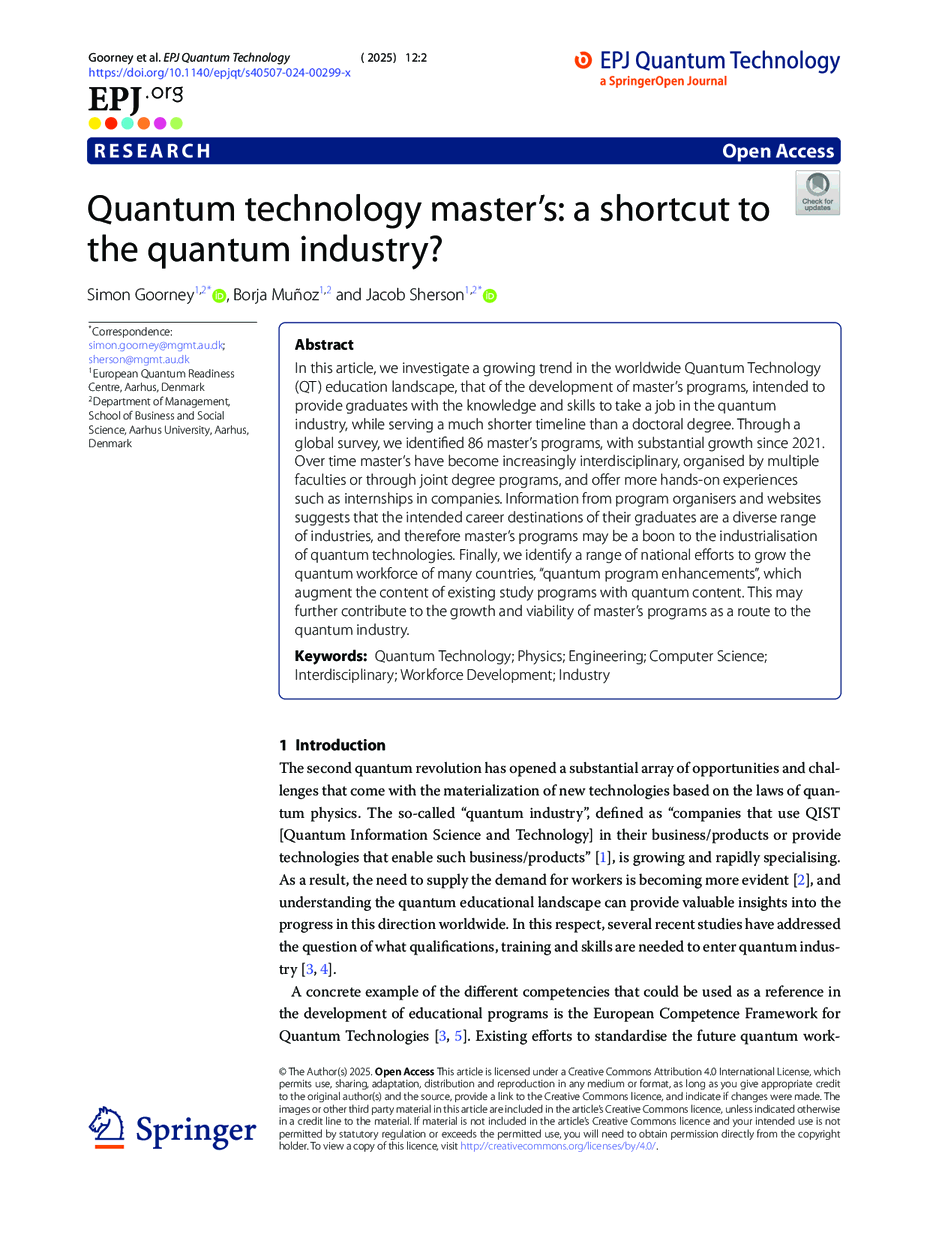https://doi.org/10.1140/epjqt/s40507-024-00299-x
Research
Quantum technology master’s: a shortcut to the quantum industry?
1
European Quantum Readiness Centre, Aarhus, Denmark
2
Department of Management, School of Business and Social Science, Aarhus University, Aarhus, Denmark
a
simon.goorney@mgmt.au.dk
b
sherson@mgmt.au.dk
Received:
9
July
2024
Accepted:
5
December
2024
Published online:
7
January
2025
In this article, we investigate a growing trend in the worldwide Quantum Technology (QT) education landscape, that of the development of master’s programs, intended to provide graduates with the knowledge and skills to take a job in the quantum industry, while serving a much shorter timeline than a doctoral degree. Through a global survey, we identified 86 master’s programs, with substantial growth since 2021. Over time master’s have become increasingly interdisciplinary, organised by multiple faculties or through joint degree programs, and offer more hands-on experiences such as internships in companies. Information from program organisers and websites suggests that the intended career destinations of their graduates are a diverse range of industries, and therefore master’s programs may be a boon to the industrialisation of quantum technologies. Finally, we identify a range of national efforts to grow the quantum workforce of many countries, “quantum program enhancements”, which augment the content of existing study programs with quantum content. This may further contribute to the growth and viability of master’s programs as a route to the quantum industry.
Key words: Quantum Technology / Physics / Engineering / Computer Science / Interdisciplinary / Workforce Development / Industry
Supplementary Information The online version contains supplementary material available at https://doi.org/10.1140/epjqt/s40507-024-00299-x.
© The Author(s) 2025
 Open Access This article is licensed under a Creative Commons Attribution 4.0 International License, which permits use, sharing, adaptation, distribution and reproduction in any medium or format, as long as you give appropriate credit to the original author(s) and the source, provide a link to the Creative Commons licence, and indicate if changes were made. The images or other third party material in this article are included in the article’s Creative Commons licence, unless indicated otherwise in a credit line to the material. If material is not included in the article’s Creative Commons licence and your intended use is not permitted by statutory regulation or exceeds the permitted use, you will need to obtain permission directly from the copyright holder. To view a copy of this licence, visit http://creativecommons.org/licenses/by/4.0/.
Open Access This article is licensed under a Creative Commons Attribution 4.0 International License, which permits use, sharing, adaptation, distribution and reproduction in any medium or format, as long as you give appropriate credit to the original author(s) and the source, provide a link to the Creative Commons licence, and indicate if changes were made. The images or other third party material in this article are included in the article’s Creative Commons licence, unless indicated otherwise in a credit line to the material. If material is not included in the article’s Creative Commons licence and your intended use is not permitted by statutory regulation or exceeds the permitted use, you will need to obtain permission directly from the copyright holder. To view a copy of this licence, visit http://creativecommons.org/licenses/by/4.0/.





